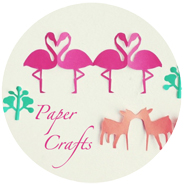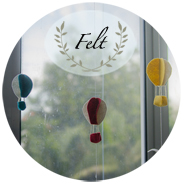The last time I was exposed to any form of art training was in Secondary School. With a teacher teaching art to a class of 30+ other classmates, there was hardly any art techniques that I could learn effectively. All I recalled from my past art learning was that I detested doing Still Art.
So when K turned 2 years old, I was determined to expose him to as many art experiences during home-learning.
Open-ended art were the first experiences in art that got him to try. There were no set ways to create something, these art experiences were just focused on new art mediums that supported his self-expression. Having an empty canvas and tools to create anything he wanted, was rather engaging for a child below 4 years old.

Nonetheless, open-ended art experiences can get rather haphazard and it often ends up to be just an exploration of art materials for the child.
It is good to provide opportunities to explore art materials and tools, but when a child approaches 3-5 years old, parents need to start thinking about how they can seamlessly expand ideas to foster the child’s mental development through open-ended art experiences.
Here are some methods I have used to maximize learning during open-ended art experiences;
1. Ask open-ended questions and prompts, “Tell me about what you have drawn?”
2. Make objective observations about the process to the picture, “I like how you have used yellow for the tree and how it blends into the green color,” instead of “I like your picture.”
3. Encourage the integration of language and writing, by encouraging a dictation of the child’s story behind the art creation. Often children will have their own stories and will want to expand on their art piece as ideas start to develop further.
4. Write a verbatim of the child’s explanation of his creation, either behind the art piece or a separate piece of paper. Eventually the child will be encouraged to model this behavior and want to start writing their own stories and creations.

Here’s how I managed to incorporate language into an Open-ended Art experience with K when he was 5 years old.
There are many advantages to open-ended art experiences, as it can give the child opportunities to expand basic concepts, use problem solving skills and language expression. It also fosters mental development, as he expresses his feelings, thoughts and ideas that he wants to communicate. The child will strengthen his ability to observe, imagine and create with open-ended art experiences.
How about Structured art experiences?
Some art educators frown upon structured art lessons for children below 7, as they feel that structured art stifles a child creativity. But I think that children can be exposed to both structured art and open-ended art experiences from 4 years old onwards.
Structured art is more product oriented, as it is useful to cement the ideas learnt from the process, may even come in the form of doing craft that is related to a theme that the child is learning. Or a set process for the child to learn a particular art technique.
I did not have any proper form of art training before doing structured art with K, but learning from books like Maryann F. Kohl, Mona Brookes, doing read-alouds with K using the Katie series of books were pivotal to encourage art appreciation and instrumental to introduce Open-ended and Structure-Art experiences during Home-learning sessions.
Here’s an example of a Structured Art Home-Learning experience I had with my son, that incorporated an open-ended outcome.

Effective Art Home-Learning experiences will give children the opportunity to connect to other curriculum areas, while focusing on creative thinking and problem solving. Modelling technique are necessary to guide and empower the child through the creative process, as most children might be overwhelmed by a new concept or new art materials and not know where or how to begin.
Remember to focus on the process and not the final product!
 Have you tried art experiences at home with your child? And what are your favorite mediums (craft, paint, color pencils, pastels etc)?
Have you tried art experiences at home with your child? And what are your favorite mediums (craft, paint, color pencils, pastels etc)?
Giveaways for Catch-Fortywinks readers!
To help readers of this blog guide your children along on their Art Home-Learning experiences, I will be giving away 4 sets of art-learning books.
All you need to do is to answer the above question, leave your children/s age in the comment, and I will be doing a random pick for 4 winners. Don’t forget to leave your email address when filling up the details of the comment form, so that I can drop you an email if you have won any of these books.
Giveaway closes 31st July 2014.




For other Home-Learning tips and ideas, view article links from this page
The Giveaway Winners are;




























